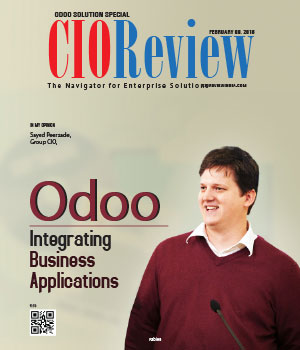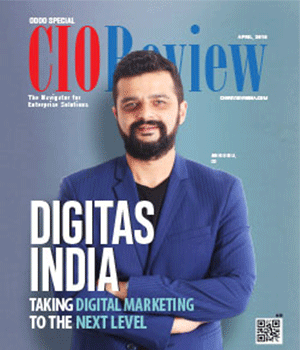
Customer Centricity In the Age of Empowered Customer
Rohit Singla, Chief Transformation Officer, BMC Software, India
 Introduction
Introduction
A Reddit user once sent an email to Tim Cook, CEO of Apple Inc. about the quality of music while on hold with Apple customer service. “It was super low quality, therefore an upbeat rock song sounded like pure distortion and really aggravated me because I was on hold for 20+ minutes. Much to his surprise, a lady from Cupertino called up the next day, saying she’d received a concerning email from Tim about ugly distortion hold music while on the phone, that Tim had tested this himself and agreed that something had to be done. She assured him that the hold music would be tested to make sure it sounded pleasant on all types of phones and connections. “The next time I called Apple, the hold music was indeed very pleasant,” posted the user on Reddit.
This is a classic example of how customer-centricity is not just a buzzword or metrics, but a mindset that is emulated right from the CEO and gears an organization, its workforce, and processes to work towards a customer’s success leading to business success.
Why customer centricity
We are in the 4th industrial revolution that marks the digital era with breakthrough development in robotics, artificial intelligence, internet of things, nanotechnology, and autonomous vehicles to name a few. Each revolution lasted less than half as long as the one before. In the Digital Era, the pace of innovation will exponentially increase. At every step, every enterprise will have to put customer and relevance right at the beginning, think of the customer experience at the start, and only after that, charter the path back to the technology so that the technology stays relevant, and drives success.
Another theory that strongly backs the customer-first approach for business is the one laid down by Roger Martin, academician, author, and business thinker. Martin breaks down modern capitalism into two major eras -the managerial capitalism and shareholder value capitalism.
During managerial capitalism that began in 1932, firms would be run by the hired help, a new class of professional CEO,” writes Martin in his article titled “The Age of Customer Capitalism”. This was followed by shareholder value capitalism that began in 1976. Its governing premise was that the purpose of every corporation should be to maximize shareholders’ wealth. If firms pursue this goal, the thinking goes, both shareholders and society will benefit. “This is a tragically flawed premise, and it is the time we abandoned it and made the shift to a third era: customer-driven capitalism,” states Martin.
Martin goes on to share, Johnson & Johnson has corporate world’s single most eloquent statement of purpose—its “credo,” which hasn’t changed since J&J’s legendary chairman Robert Wood Johnson created it in 1943 bluntly spells out the pecking order: Customers come first, and shareholders last. However, J&J has confidence that when customer satisfaction is at the top of the list, shareholders will do just fine. My belief is, as enterprises make their progression towards Digitally Native Enterprises (DNEs), their single most important focus should be to make the customer as their top priority. With customers as their focus, the quality of strategic direction and the decisions that follow will be top-notch and will ensure relevancy of products, solutions, and services using the digital-era technologies.
Absence of customer centricity
Industry insights provide the unsympathetic prediction that 75% of the current S&P500 companies will be replaced by 2027 for lack of addressing technology innovation, turbulence, and lack of coherent vision to ensure relevance to the digitally empowered customer.
Enterprises will cease to exists in the absence of a deliberate effort of defining, architecting, developing, and executing a focussed customer-centric culture across their constituents globally.
It’s karmic to see the age-old issue surfacing again, this time around, an “outside-in view”.
In the absence of Customer Centricity, functions in the organization have a different interpretation of the customer, be it in the B2B, B2C, B2Things, or B2AIbusiness models.
Challenges in the way of customer centricity
Organizations across the world, irrespective of industry, either has been or are being disrupted at an exponential pace. As per International Data Corporation (IDC), “to win against digital disruptors, organizations must become Digitally Native Enterprises (DNEs). A DNE can scale its operations and innovate at a pace that is an order of magnitude greater than traditional businesses. It is driven by a customer-centric and empowered workforce that embraces risk-taking as it seeks to continuously innovate. Technology and data are the lifeblood of a DNE fuelling more efficient operations, new revenue streams, and customer loyalty. A DNE adopts an outside-in approach, leveraging its ecosystem of stakeholders (i.e., customers, partners, employees, and community) to dynamically evolve offerings and even its business model”.
Some of the top challenges being faced by organizations to adopt customer centricity are:
• Being an outside-in view for enterprises, it’s critical to help workforce across the world live the purpose at all levels. The challenge is to have a workforce across the enterprise that believes in one single defined “credo”.
• Senior leaders miss identifying potential “fault lines” in their industry that may signal shifting customer base. Leading to losing customers in this fast-paced and interconnected world with the dramatic change in the way customers share, analyze, and process information that has far-reaching political, societal, and economic consequences in the Digital Era.
• Siloed Customer Centricity initiatives — a lack of coordinated effort across business functions impairs a company's ability to maximize potential and to move quickly.
• Limited expertise—Customer Centricity dictates a new set of capabilities that enterprises find difficult to cultivate.
• Islands of innovations—There may be too many initiatives involving too many technologies; organizations must look at a digital platform to optimize resources and innovate more rapidly
• The heightened volatility of customer demands with differentiated responses due to lack of Customer Experience OS.
While customer centricity is critical for businesses, it is important for businesses to remember that not all customers turn out to be profitable. Businesses must identify and focus on the right customers.
As Dr. Peter Fader writes in his book Customer Centricity: Focus on the Right Customers for Strategic Advantage, “High-quality customers are those who stay loyal to the company and don't leave unless given a very strong incentive to do so. These customers have a high Customer Lifetime Value (CLV) and collectively have a low attrition rate. Customer-centric organizations strive to acquire, retain and develop this type of customer by enhancing their experience.”
Leading the way
Chris Brown, co-author of The Customer Culture Imperative: A Leader’s Guide to Driving Superior Performance, describes a customer centric-culture as ‘a shared system of values and norms (mindset and behaviors) that focuses all employee activity on improving the overall customer experience.
Key takeaways
1. Form a Customer Experience Department directly reporting to the CEO.
2. Formulate a Customer Experience Program weaving all the three aspects—strategy, customer, and employee (workforce) together.
3. Build a “Customer Experience OS: The Central Nervous System of the Customer-Centric Enterprise”
This will create a wholesome Customer Life Journey through all the stages and touch-points that a customer has with an enterprise.
I leave you with a quote by William Gibson, “The future is already here — it’s just not very evenly distributed.”
CIO Viewpoint
Why Foolproof Facial Recognition Is Key Against...
By Joseph Sudheer Thumma, Global CEO & MD, Magellanic Cloud
National Technology Day 2025: Powering Progress...
By CIOTech Outlook Team
Aligning IT Roadmap with Business Objectives: A...
By Subhash singh Punjabi, CISO & Head Enterprise Architecture, Deepak Fertilisers & Petrochemicals Corporation Ltd
CXO Insights
Get To Know Your Assets Better With Next...
By Amit Mondal, VP, PowerSchool Group LLC
Unlocking Customer Centricity Within, Is Easier...
By V Viswanand, Senior Director & COO at Max Life Insurance Co. Ltd
Predictions 2018: Areas In Which AI And Machine...








